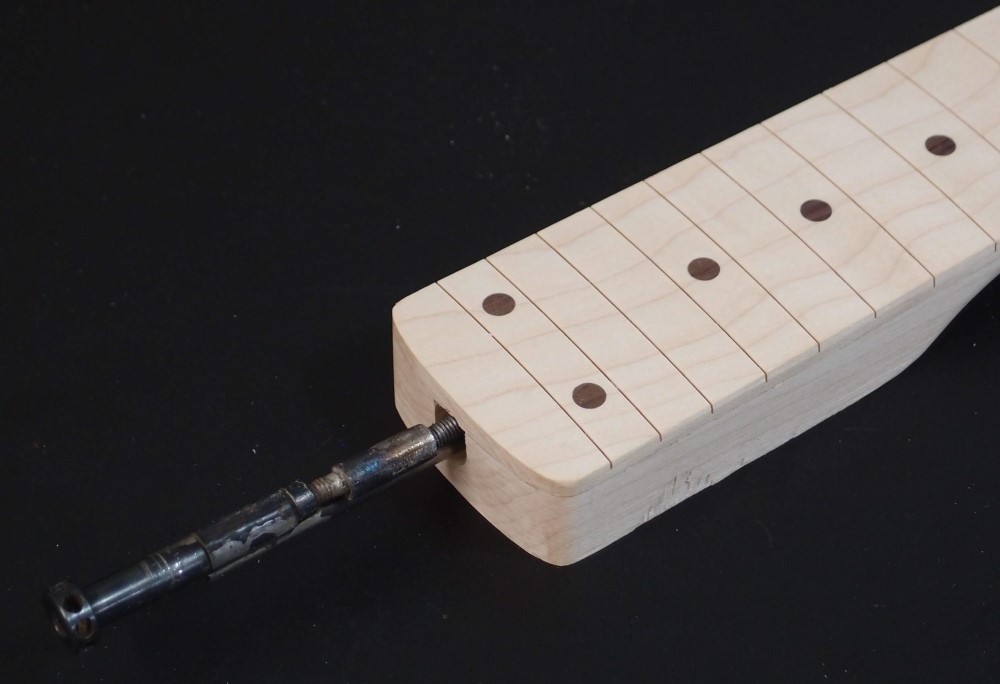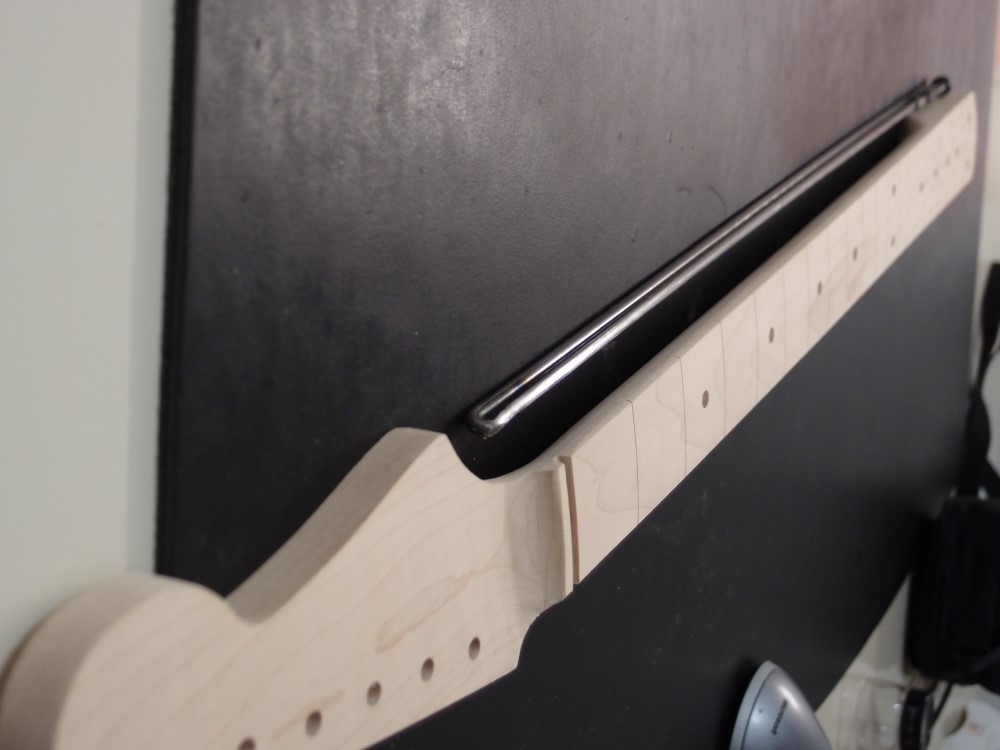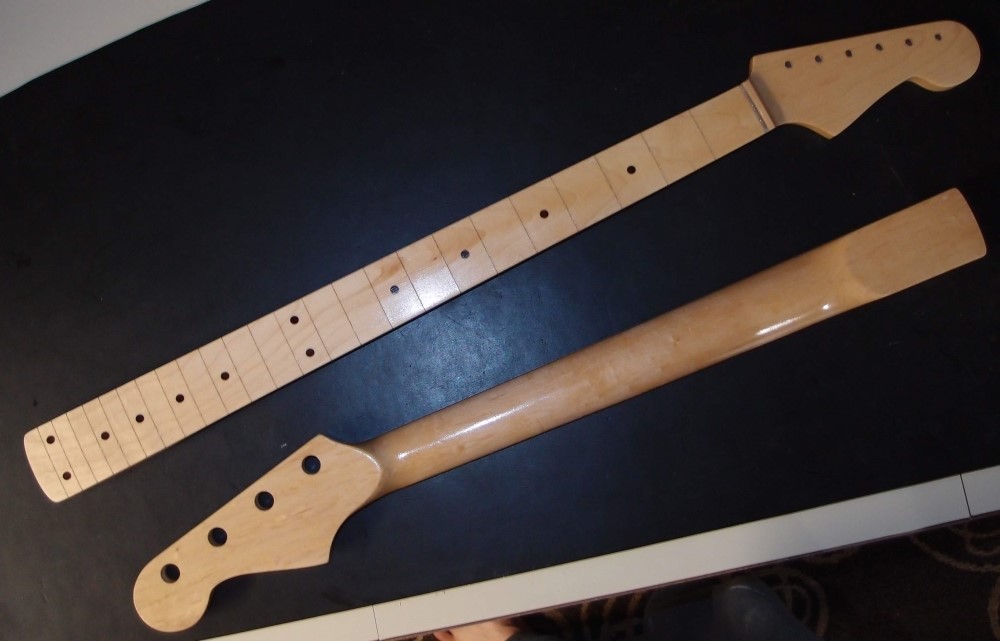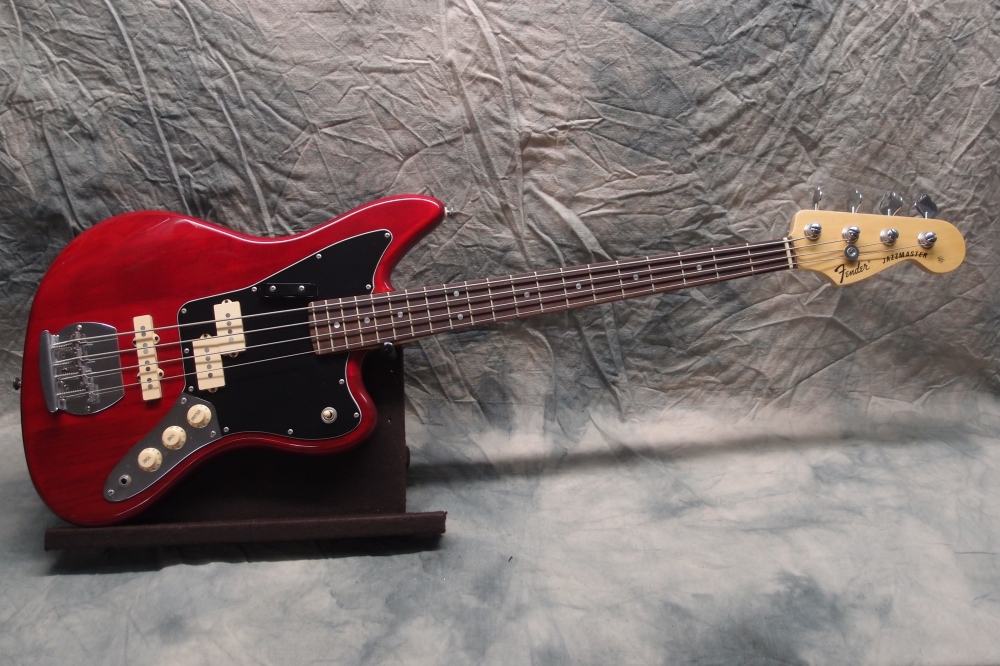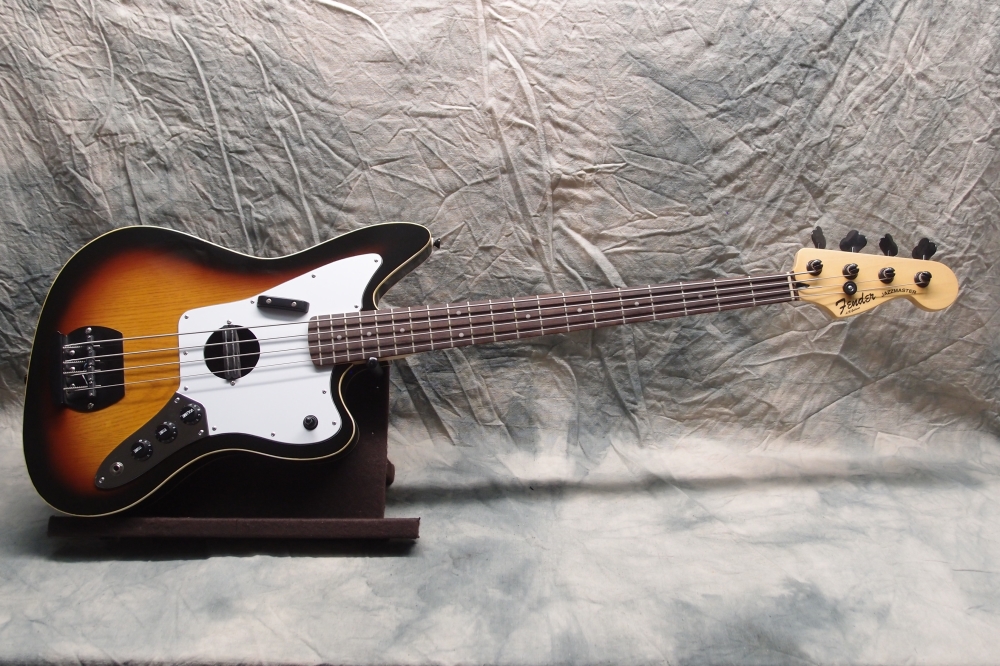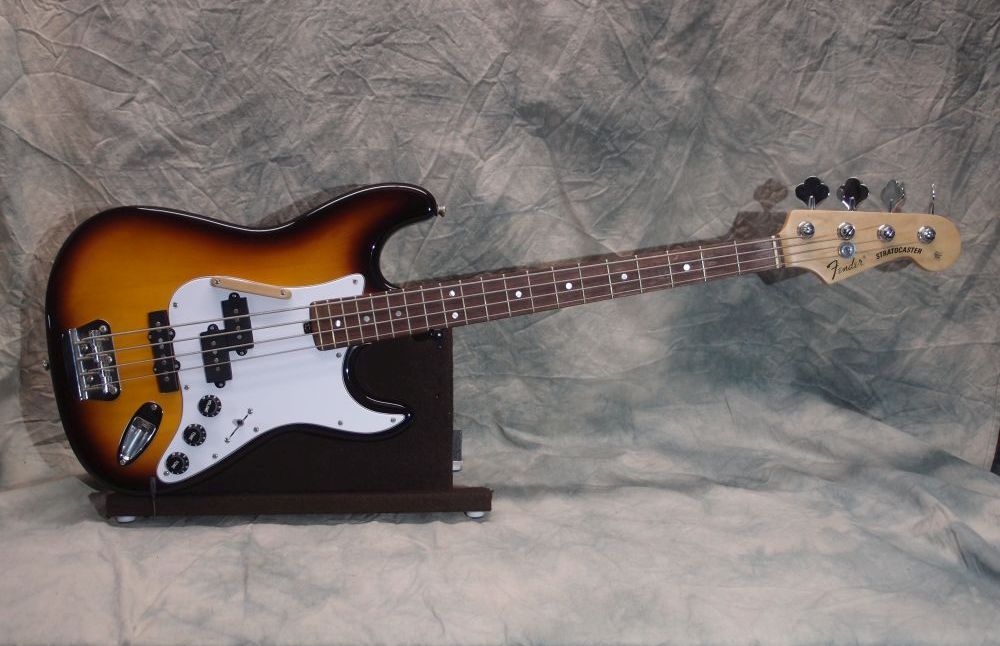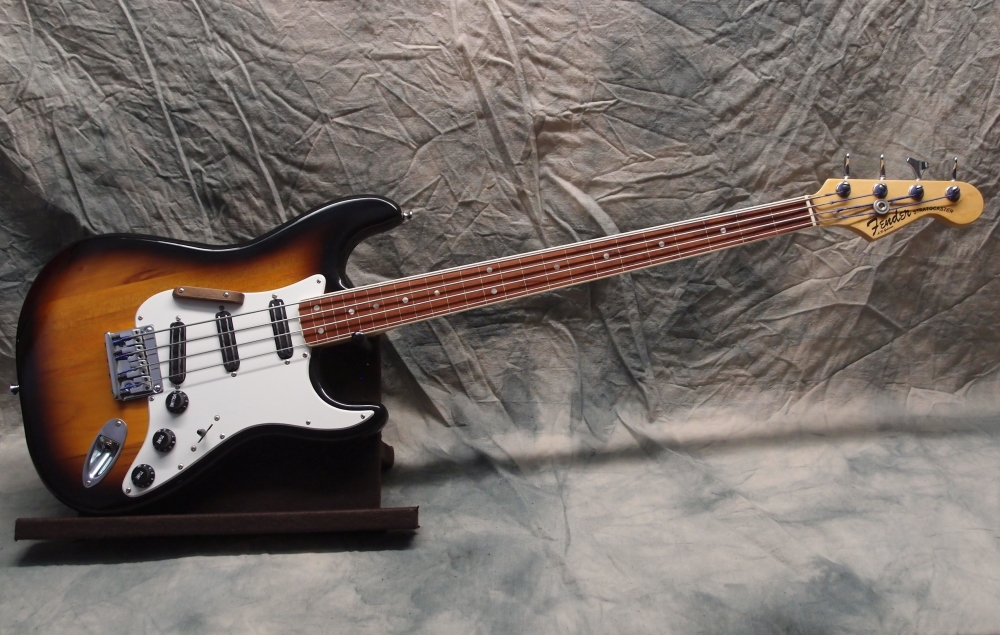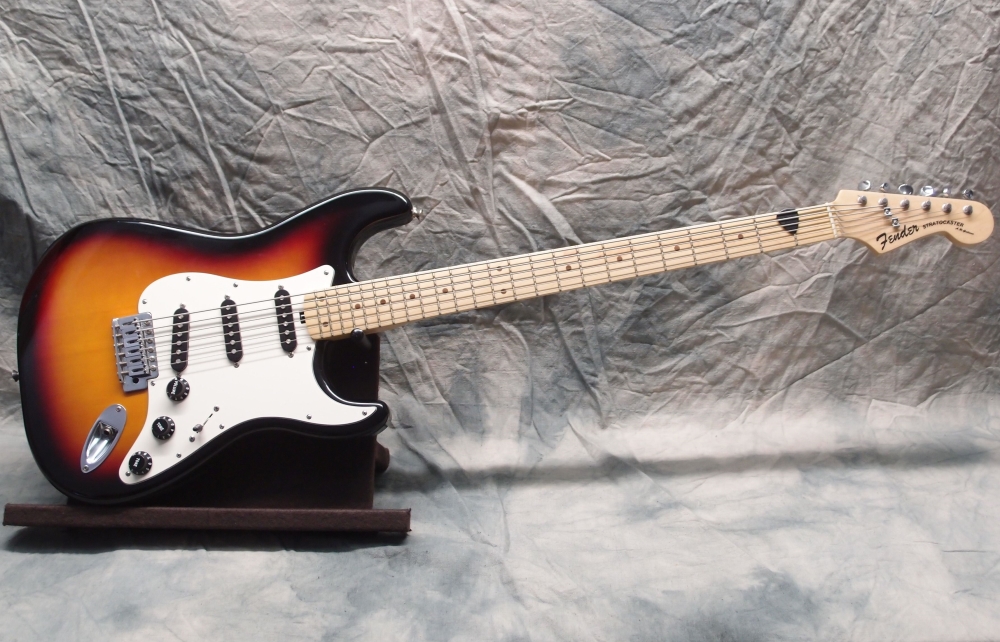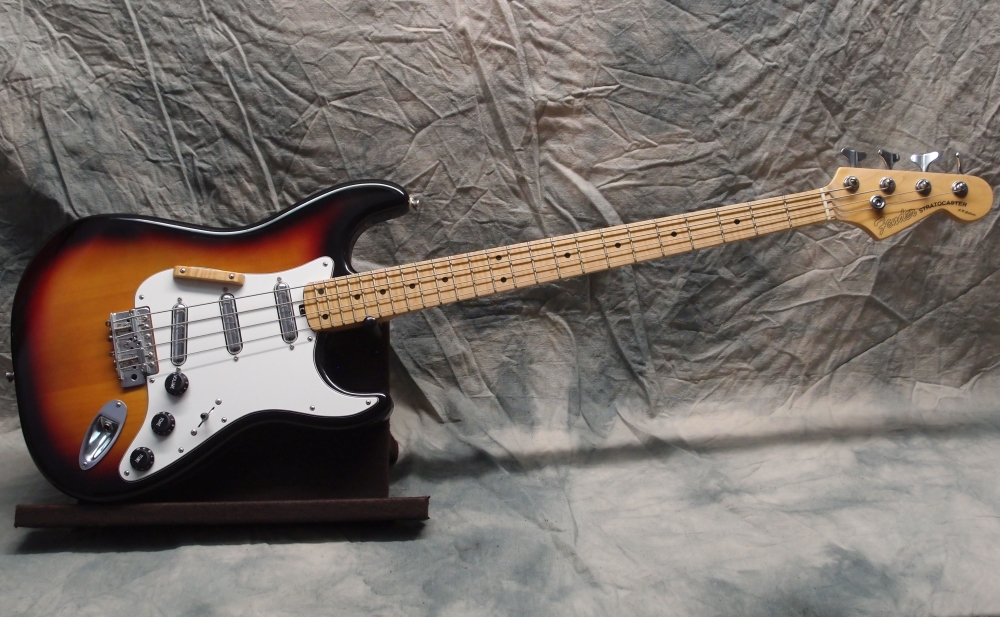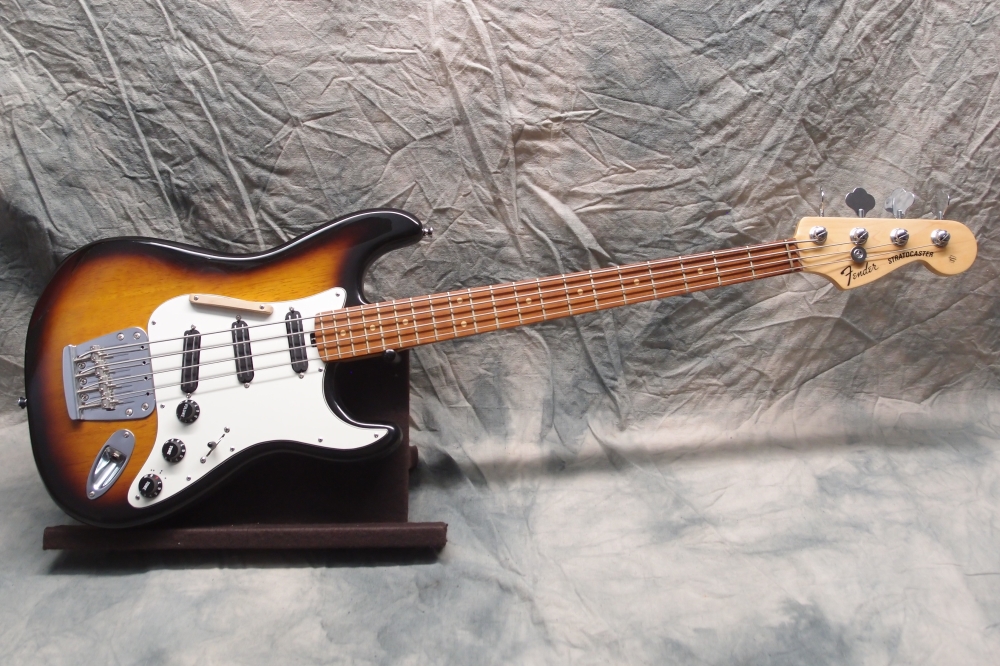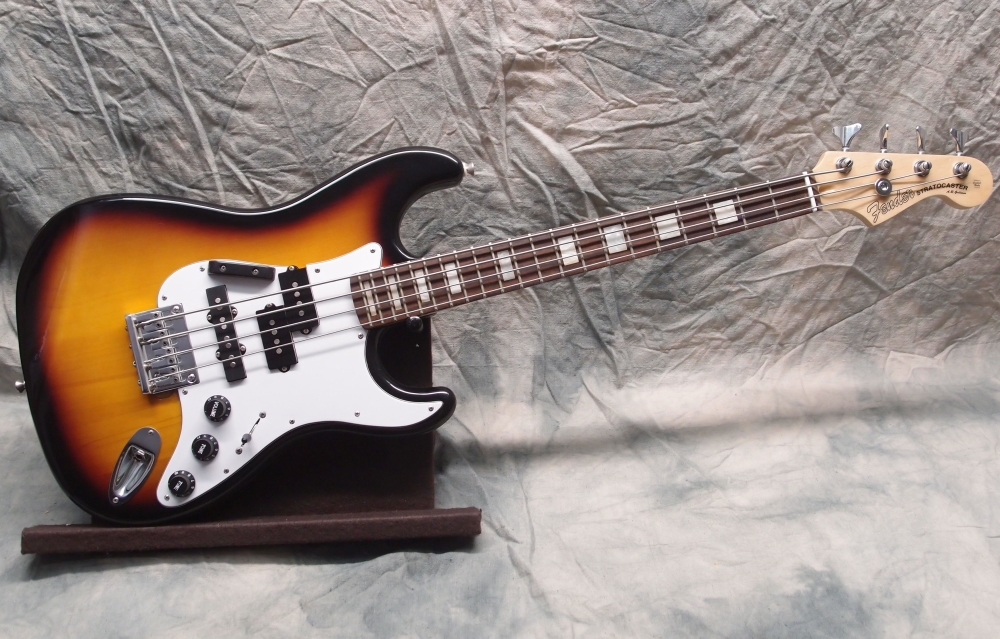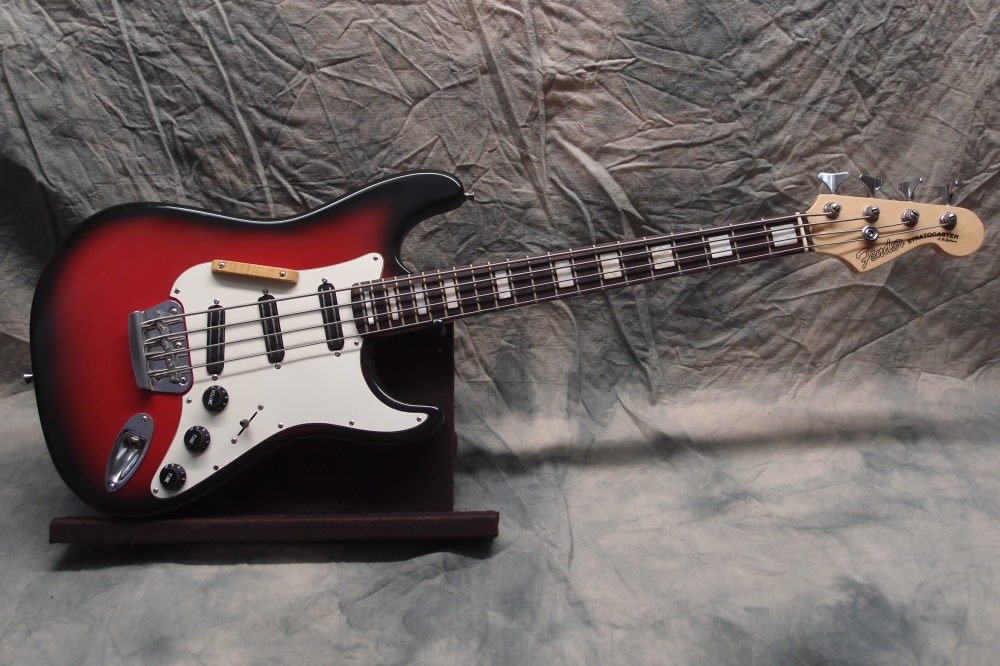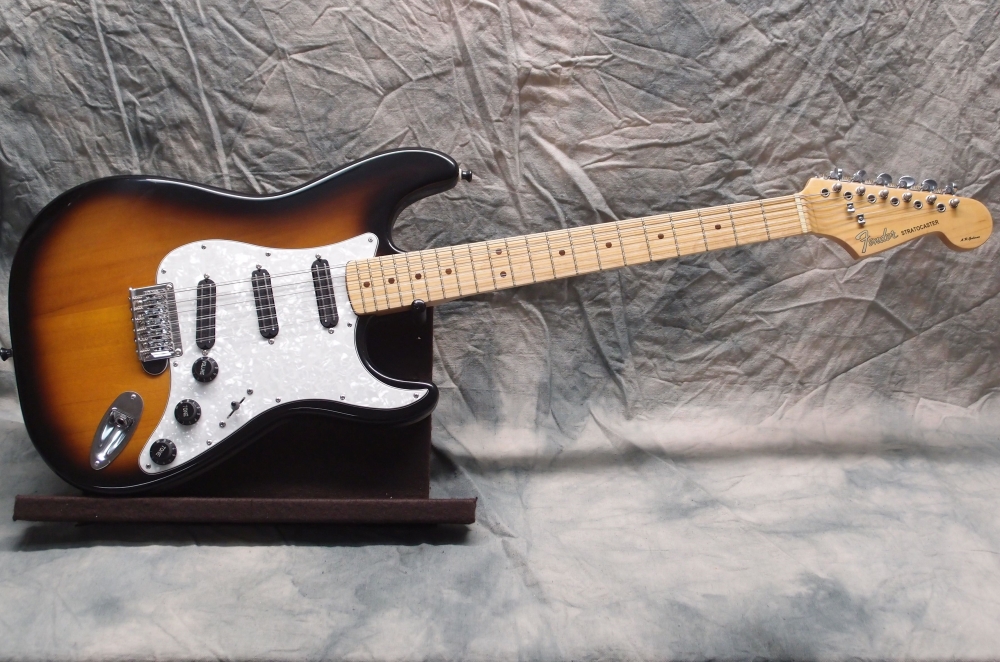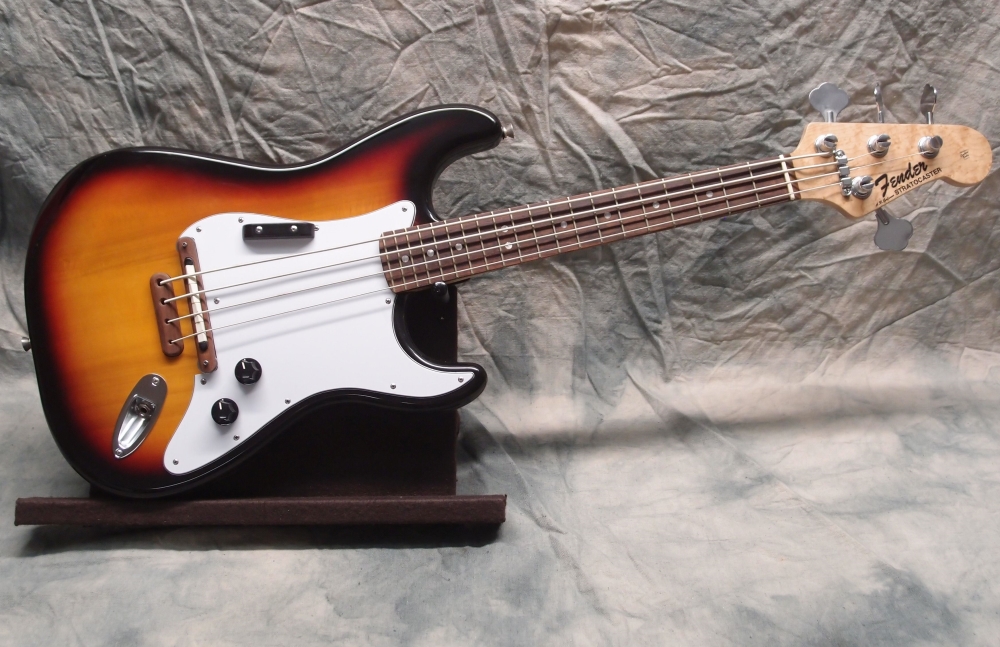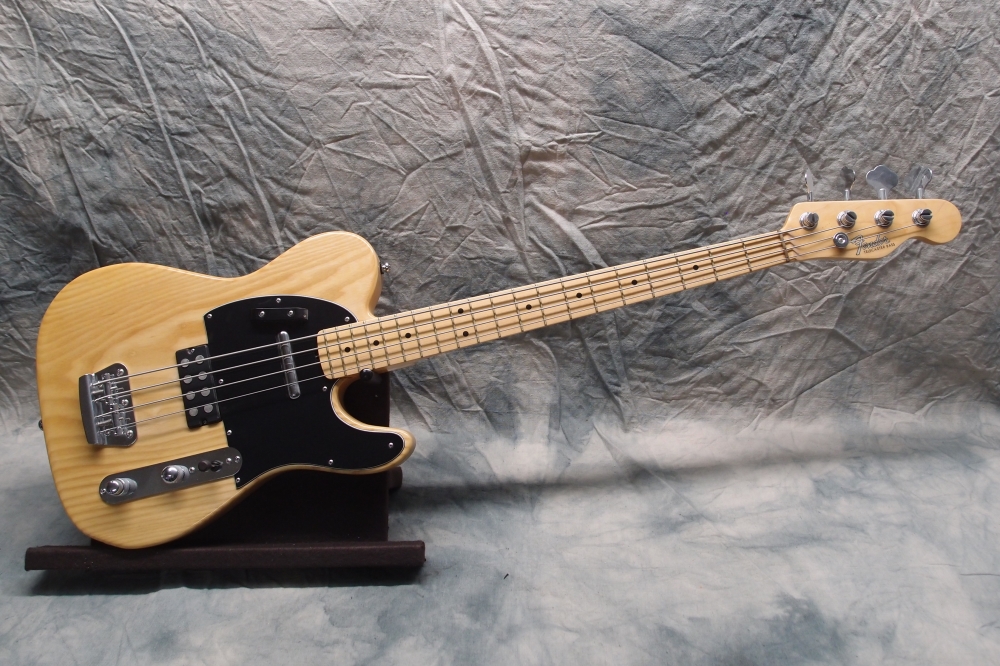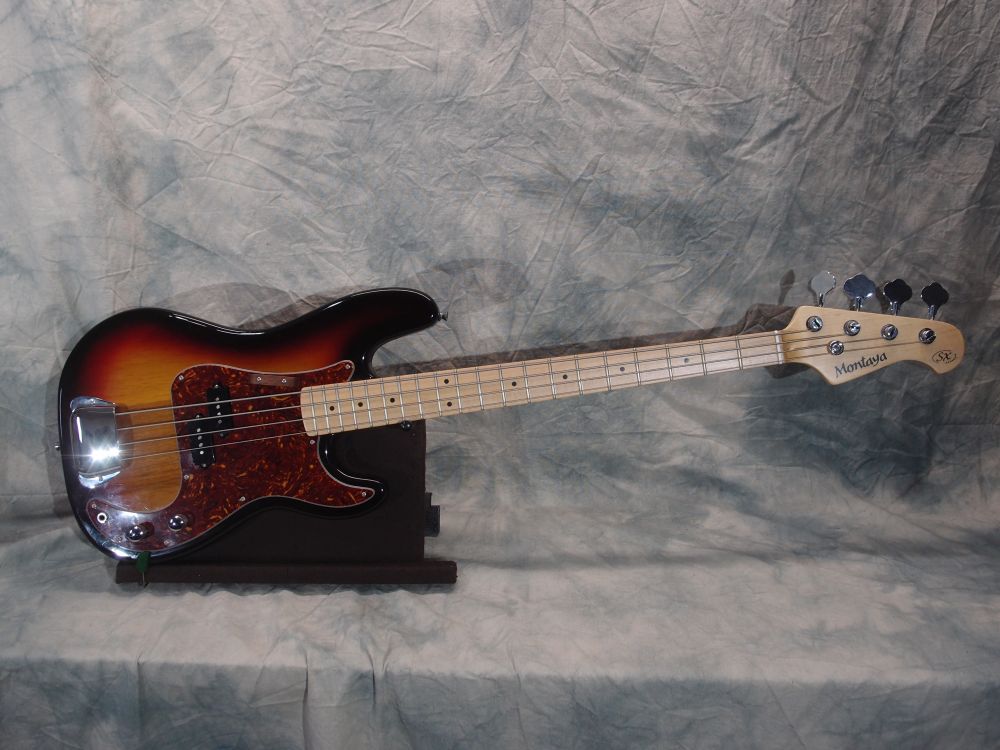Stratocaster Bass VI (2/3)
The replacement body for the Bass VI arrived unexpectedly early, and it's a beauty. It will look even better after it is buffed-out and shined:
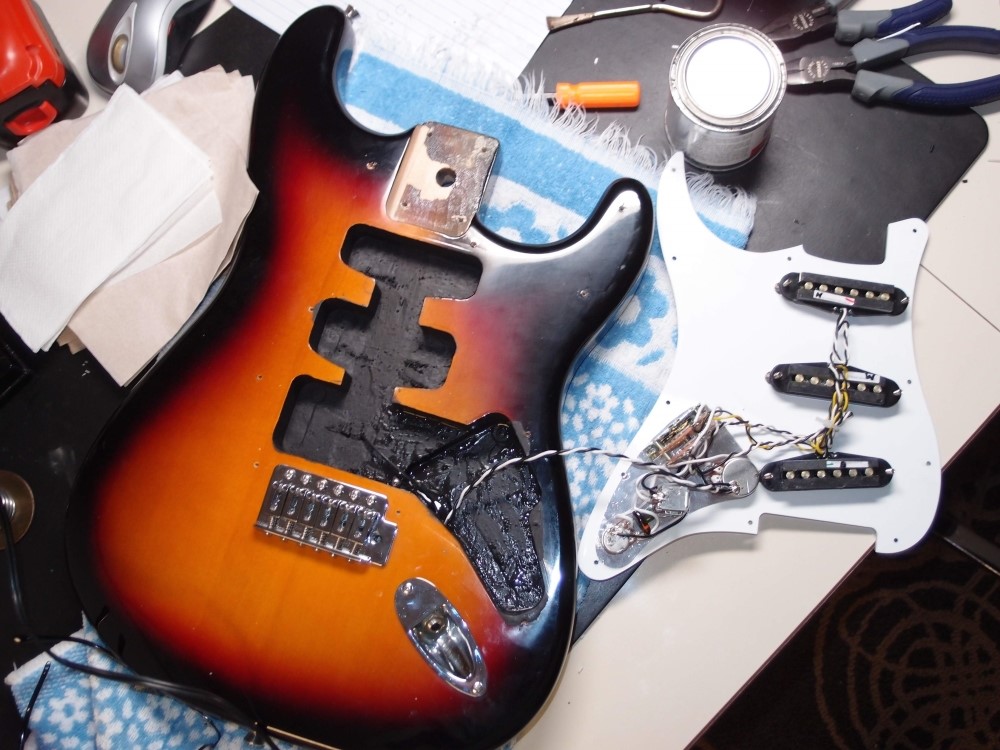
I built a special tremolo bridge out of all the best pieces of all the Strat bridges I have collected, and installed an extra spring for the bass strings. I'm not going to attempt a full-floating installation, but tighten down the springs for tuning stability and down-bends only.
Then I had a soldering-fest. I used stock Squier pickups, but with a twist: they are wired in series, rather than the usual parallel. This is how Danelectros are typically wired. Series wiring has some distinct advantages. When two pickups are wired in parallel, each acts as a ( albeit high impedance ) short to ground ( or 'load' ) for the other's output. * The result is not double the output, but actually somewhat less than either pickup alone. The problem gets worse with each pickup you add, which is why Strats do not normally have an 'all three' option. Fortunately, our ears are not linear devices and smooth out the loss in volume somewhat.
( * This is an oversimplification, but good enough. )
When two pickups are wired in series, the output of one is connected to the ground of the other. The outputs are directly additive, there is no loading effect as with parallel wiring. You get noticeably more output, and usually a much fuller sound. It is possible to 'daisy chain' as many pickups as you want like this, but for practical purposes, three single coils is the limit, more than that becomes boomy and harsh. This is why humbuckers generally do not sound good in series - the two coils in each pickup are already in series, putting the pickups in series puts all four coils in series, it's just overload. On the other hand, humbuckers often sound better in parallel than single-coils, it lightens them up a bit, whereas single coils in parallel can become overly thin - the 'quack' sound that the Strat is so famous for. I'd rather roar than quack, especially on a bass.
The main reason Fender went for parallel wiring is that it makes pickup switching much simpler, and in the beginning ole' Leo barely knew what he was doing, so anything he could get to work with the parts he could get his hands on was going to be good enough. The Strat originally had a three-way switch with no combinations, it wasn't until much later that improvement was added in the factory. Pickup switching with series wiring is much more complicated. Take a look at a Danelectro wiring diagram and try to figure out what is going on with the switch. It is so simple, and yet totally unintuitive. Nathan Daniel was a real electrical engineer, and these things were second nature to him, as was good shielding and grounding, things that are lacking in most guitars to this day.
Pickup switching with series wiring is not so much a matter of selecting the pickup(s) you want, but de-selecting the ones you don't want. You can't do this with an ordinary Strat switch ( another reason why Fender went parallel ) but you can do it with a modern 'super switch'. A super switch is really 4 independent 5-way switches ( or poles ) that move as one, like two ordinary blade switches ganged together. For series switching, you use one pole per pickup, so in this case, one pole is unused. For each position on the switch, you remove some pickup(s) from the chain by shorting its output to its own ground, turning it into an inert loop. This preserves the path to ground for the entire chain, while effectively silencing that particular pickup. So for position 1, you would short out the middle and bridge pickups, and only the neck would sound. Etc. Note that you short each pickup to its own ground, not to the main ground.
A caveat about the super switch is that it is physically bigger, wider, and deeper than a standard switch, and will only fit into a full-thickness body. You can see the size of it in the photo. Many of the Squier bodies you will find, such as the Bullet line, are too thin to take the switch I used. Even with this full-thickness body, I had to Dremel a shallow pit for the switch to sit in, but that is mainly so that it is not shorted-out by the conductive shielding. I used a double thickness of electrical tape in the bottom just to be sure.
I also installed a push-pull switch to one of the tone knobs which defeats the 'de-selector' for the bridge pickup. ( Confused yet? ) This allows for the forbidden combinations that the 5-way switch won't give you: neck and bridge, and all three. In a parallel world, you would use the switch to do the opposite to get the same effect: it would enable the bridge pickup independently of the blade switch. Everything is topsy-turvy in series land, but its a cool place if you can get your head around it, too bad Leo never did. And then there's Gibsin. Don't get me started ... can't even wire up a volume control right.
So anyway, the end result is that the combination positions, 2&4 and 1&p will actually be bigger than the single positions, and the super-combo 2&p will be even more ( where p stands for the push-pull switch. ) On a bass, that should be pretty cool. Positions 2 & 4 are fully humbucking, with position 2 & p is semi-humbucking, the two end coils overwhelm the middle one, but there is still some reduction in noise. The same is true in parallel wiring.
The middle tone control is also a standard treble roll-off. Now what to do with the other one? How about a bass roll-off? Easy enough, just need a 500k pot and a 0.0022nf capacitor. This is some more topsy-turvy. While a normal tone control works by selectively bleeding off high frequencies to ground through a fairly large capacitor, a bass roll-off is almost the opposite. A bass roll-off works by selectively forcing the output through a very small capacitor, which blocks the low frequencies but passes the high ones. In both cases, the pot is used to control the amount of filtering, whether low or high.
On the piccolo bass, I combined both functions onto a balance pot, which is kind of like two pots that move together in opposite directions. ( Actually, they move in the same direction, but one of them is backwards. There's more to it than that though. ) In that case, you can only access one filter at a time, either high or low. With two separate controls here, you can enable both at once. It will be interesting to find out what that sounds like, maybe sort of compressed, or maybe just strangled, I don't know. Note that even though these guitars have bass and treble controls, they are cut-only. A passive control can only reduce what is already there, it cannot add anything, for that you need a powered circuit and a battery.
So that's some pretty cool wiring on just 3 shafts and a blade switch, which outwardly preserves the Strat aesthetics while going way beyond the Strat electronics. And all without a battery. If I had another push-pull switch, I might add a simple passive distortion circuit, but I'm all out of them, and enough is enough. You could conceivably put a push-pull on the volume too, but I can't think what I would do with it.
In the picture, you can see the wet shielding paint drying. This is great stuff, expensive, but so much easier than messing around with tape and foil. Just paint it on and connect a ground wire. Takes at least three coats to get a good shield. I painted the entire cavity with one coat, then several more on just the control cavity. The final shield to ground resistance in the control cavity is now well under 200 ohms, probably less with the pickguard installed, as the paint and foil shield also make contact in several spots. I even put a coat of shielding inside the jack cavity, where it is grounded by the cover, although I think that is really just a waste of paint.

